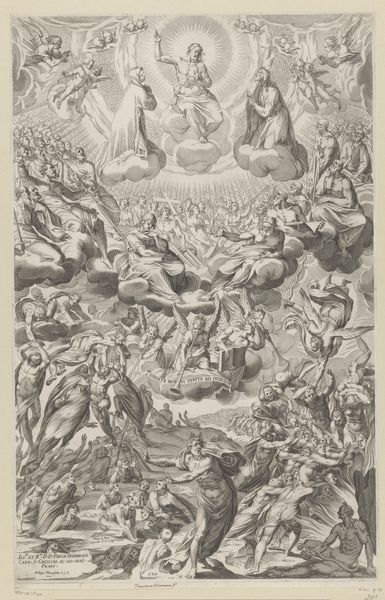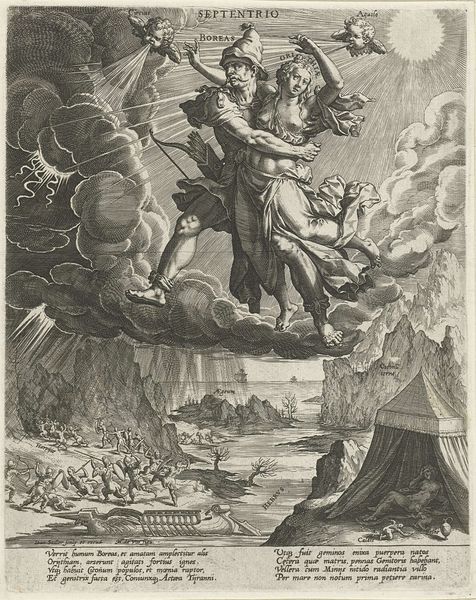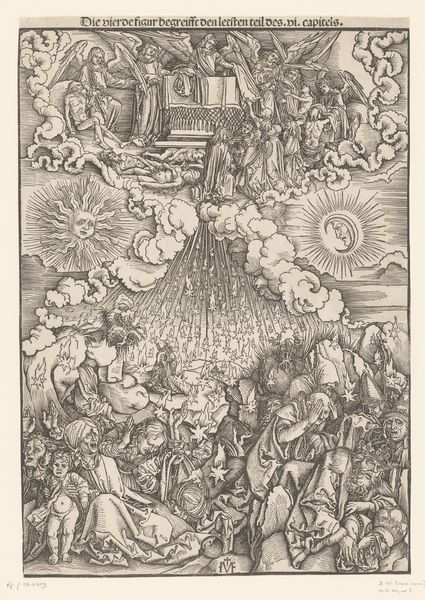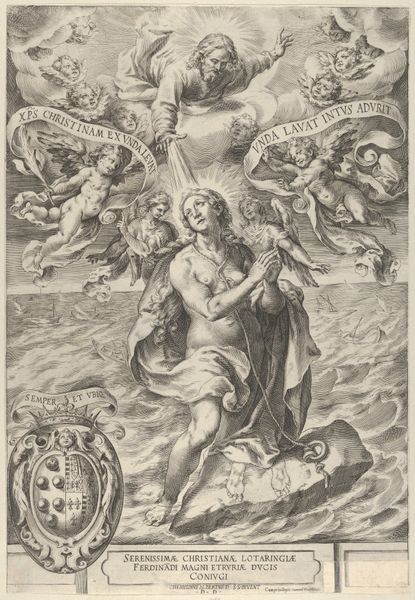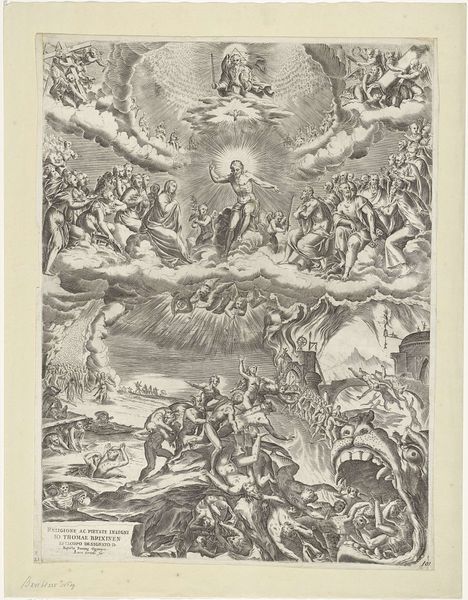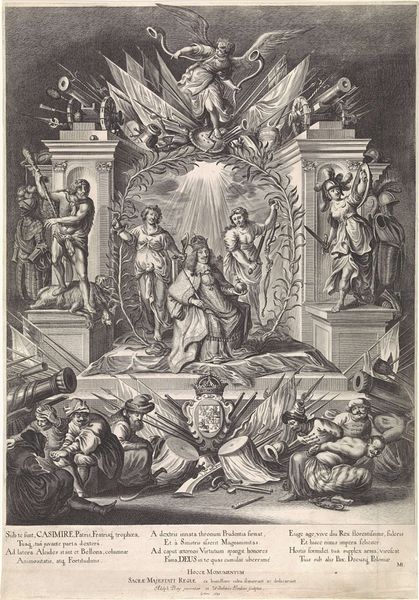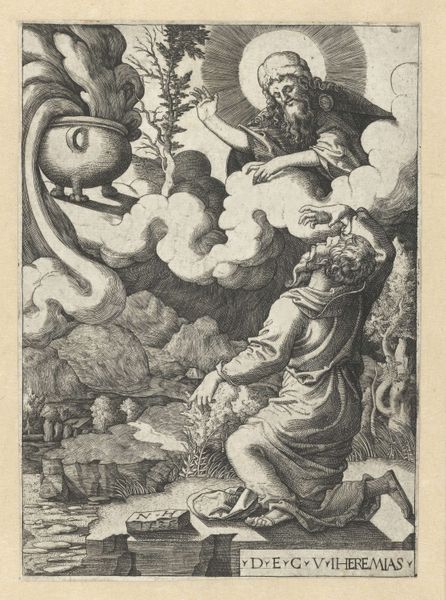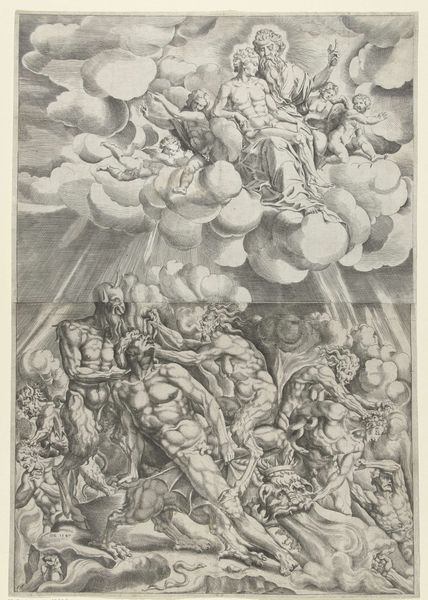
print, engraving
#
allegory
#
baroque
# print
#
figuration
#
history-painting
#
engraving
Dimensions: height 311 mm, width 230 mm
Copyright: Rijks Museum: Open Domain
Curator: Here we have "Christus als overwinnaar," or "Christ as Victorious" by Guillaume Altzenbach, a print made sometime between 1650 and 1672 using engraving as the medium. What stands out to you? Editor: Immediately, it’s the verticality. Everything's floating, suspended in this cloudscape, pushing upwards toward...something. And all the figures, so densely packed, layered in these discrete tiers. It’s overwhelming. Curator: The layering is significant. Altzenbach uses this hierarchical arrangement to depict different aspects of Christ's triumph. At the top, we see the Holy Trinity, signifying divine authority and power, the God. Below that is Christ stepping triumphantly, but on the Cross. Editor: It's the figures beneath Christ that I find compelling. There's Mary and the infant Jesus, evoking notions of tenderness and humanity. Then you have those four figures on a lower tier...they appear like prophets, almost regal? What’s the narrative being built here? Curator: It represents a grand theological argument. Altzenbach synthesizes the Old and New Testaments. He places the crucifixion alongside Old Testament figures to suggest the fulfillment of prophecy through Christ's sacrifice. These biblical characters attest to Christ's place within the unfolding of religious history. Editor: So, it's a statement about continuity and legitimacy. But what about the context of the artwork? What was happening at this time influencing the production and reception of art like this? Curator: Altzenbach lived during a period of religious upheaval and reformation. This print would have served as a reaffirmation of traditional Christian dogma in a society grappling with evolving beliefs. Prints such as this played a crucial role in disseminating religious narratives, shaping public perception. Editor: A public tool then. The layered approach, densely populated, becomes less about pure reverence and more a means of engaging a diverse public, cementing their understanding and commitment to a particular set of doctrines, ideas. A clever rhetorical tactic using religious iconography. Curator: Exactly, and through printmaking, these theological ideas could be spread widely across society. Looking at "Christ as Victorious," it reminds us of how art intersects with larger power dynamics and cultural movements. Editor: Yes, how imagery, even seemingly devotional, serves very real social functions, defining who belongs, and who is outside. An engraving offering not just solace but instruction. Curator: This artwork prompts reflection on both the aesthetic and socio-political aspects of religious art of the period, really making this piece from Altzenbach that much more worth exploring and understanding.
Comments
No comments
Be the first to comment and join the conversation on the ultimate creative platform.


